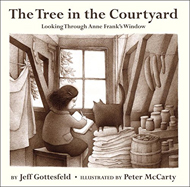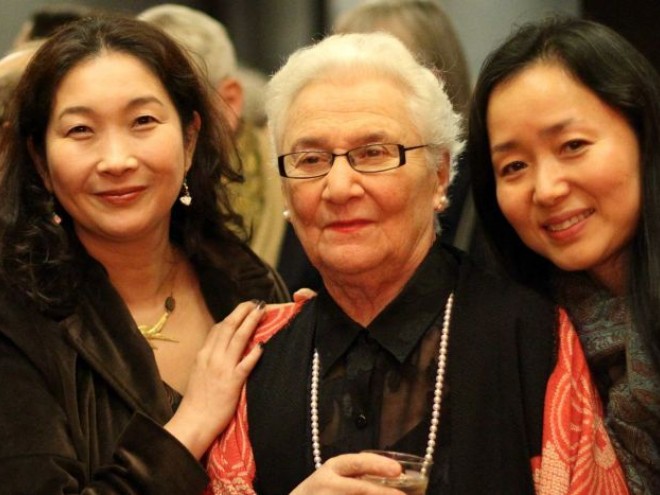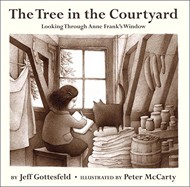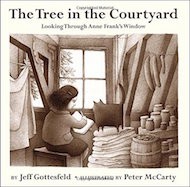Earlier this week, Jeff Gottesfeld shared how a news story about a dead tree inspired his first children’s book, The Tree in the Courtyard. Jeff is guest blogging for Jewish Book Council all week as part of the Visiting Scribe series here on The ProsenPeople.
There are two types of writers: those of us who outline, and those who don’t.
Outliners can’t understand how non-outliners can keep their stories straight, and non-outliners can’t understand how outliners can place such boundaries on their imaginations. When an outliner smacks into a story that defies outlining, or a non-outliner is thrust into a world where outlines are not only helpful but required, it can be anywhere from disconcerting to disaster. I speak from experience.
 I’m in the former category. I outline extensively. When I speak in schools — which I do a fair amount — I often bring two props with me. First I pass around the printed manuscript to a novel I wrote a few years ago for Grosset & Dunlap. It was a fun paperback title for kids, particularly designed to attract boy readers because of its, um, body-slamming subject matter. Great literature? No. A book to get kids hooked on reading for fun? That was the idea. It sold well, got into Scholastic Reading Club and book fairs, and potentially turned some kid into a reader for life. That manuscript is maybe 160 pages, 25,000 words or so in 25 chapters.
I’m in the former category. I outline extensively. When I speak in schools — which I do a fair amount — I often bring two props with me. First I pass around the printed manuscript to a novel I wrote a few years ago for Grosset & Dunlap. It was a fun paperback title for kids, particularly designed to attract boy readers because of its, um, body-slamming subject matter. Great literature? No. A book to get kids hooked on reading for fun? That was the idea. It sold well, got into Scholastic Reading Club and book fairs, and potentially turned some kid into a reader for life. That manuscript is maybe 160 pages, 25,000 words or so in 25 chapters.
Then I show them my outline. Twenty full pages, chapter by chapter: the whole book, in brief. Each outlined chapter has not only two or three paragraphs of text, but three or four bullet points that summed up the major plot points. Writing that outline took a week or so, but it was worth it. Once I had the story, the writing part was a pleasure. And I was not at all straightjacketed by my own narrative: I could veer if I wanted, but if I did veer, I had to think about what happen to the rest of the structure and adjust accordingly.
Teachers love it when I talk about outlining. They invariably hit resistance when they try to get their students to “pre-write.” Kids stare in wonder when I explain how every single movie or television show they’ve ever seen was in outline form before a studio or network approved it to go to script. Sometimes I bring along a TV script outline for even more show-and-tell. Or, I’ll get a student to suggest an essay topic, go to the white board, and dash off a quick outline for a five-paragraph essay on that subject. When it’s done, I say, “Okay. The hard part is now done. The writing is easy.”
Writing that follows a good outline is clear prose. Teachers tell me that they would rather read a clear essay that is decently written than a muddy mess full of glorious sentences. So would I! The problem for us outliners is that there at least three kinds of writing for which conventional outlining is of limited utility: picture books, poetry, and keeping a diary and/or writing letters. Which is why, when I wandered into the 900-word maximum manuscript that was my first attempt at The Tree in the Courtyard, I felt like I was in uncharted territory that was all quicksand.
So I did what people do when they wander into quicksand. I floundered.
I needed a different way to figure out my story. I had a natural beginning: the tree in the courtyard of 263 Prinsengracht, Amsterdam sprouted in 1829. I had the middle: the relationship between Anne Frank and the tree. And I had the end: what happened to that tree, from the time that the occupants of the secret annex were betrayed until the collapse of the tree in 2010, and the subsequent planting of the tree’s “children” at significant sites around the world.
Beginning, middle, end. But nothing else. I was not going to be able to impose my will on this story. Instead, I had to be willing to let the story guide me. I started writing lines that I thought (or at least hoped) would find their place in a manuscript, however out of order:
The tree recalled how few had tried to save the girl.
The tree in the courtyard lived for 172 years.
Like the girl, the tree passed into history. Like the girl, she lives on.
She spread roots, and reached skyward in peace. Until war came.
Even when her father called her, she wrote.
It was writing as jigsaw puzzle, and I grew up hating jigsaw puzzles. I can’t say I’m a fan of them now. But here’s what I am a fan of: letting stories guide me where they want me to go. Sometimes it takes a map; sometimes it takes being willing to wander into uncharted territory.
Feels a lot like life.
Jeff Gottesfeld is an award-winning writer for page, stage, and screen. He has previously written for adult, teen, and middle-grade audiences; The Tree in the Courtyard is his first picture book.
Related Content:
- Anthony Schneider: In the Beginning(s)
- Lisa Barr: How Far Would You Go for Your Passion?
- Richard Codor: Too Many Latkes! Twenty Years in the Making
Jeff Gottesfeld is an acclaimed writer for page, stage, and screen. His work has won awards from the American Library Association, the Writers Guild of America, and the National Council for the Social Studies. He has previously written for adult, teen, and middle-grade audiences; The Tree in the Courtyard is his first picture book, and No Steps Behind is his second.




